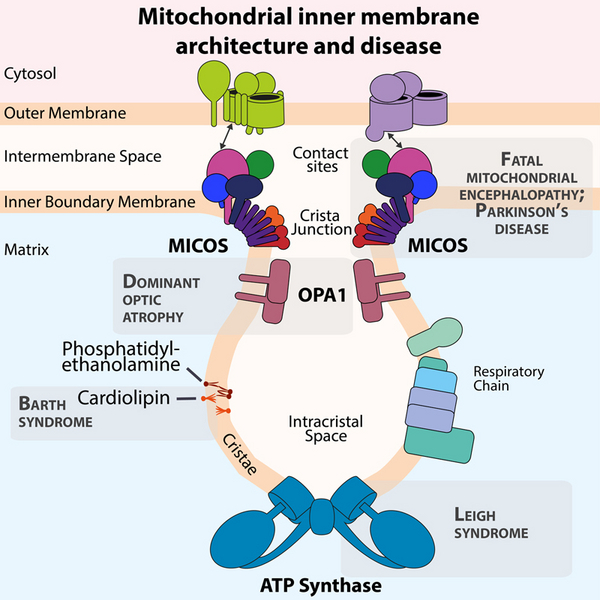J Intern Med. 2020;287(6):645-664


Shaping the mitochondrial inner membrane in health and disease
Mitochondria play central roles in cellular energetics, metabolism and signaling. Efficient respiration, mitochondrial quality control, apoptosis, and inheritance of mitochondrial DNA depend on the proper architecture of the mitochondrial membranes and a dynamic remodeling of inner membrane cristae. Defects in mitochondrial architecture can result in severe human diseases affecting predominantly the nervous system and the heart. Inner membrane morphology is generated and maintained in particular by the mitochondrial contact site and cristae organizing system (MICOS), the F1Fo-ATP synthase, the fusion protein OPA1/Mgm1, and the non-bilayer-forming phospholipids cardiolipin and phosphatidylethanolamine. These protein complexes and phospholipids are embedded in a network of functional interactions. They communicate with each other and additional factors, enabling them to balance different aspects of cristae biogenesis and to dynamically remodel the inner mitochondrial membrane. Genetic alterations disturbing these membrane shaping factors can lead to human pathologies including fatal encephalopathy, dominant optic atrophy, Leigh syndrome, Parkinson's disease, and Barth syndrome.




